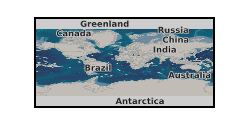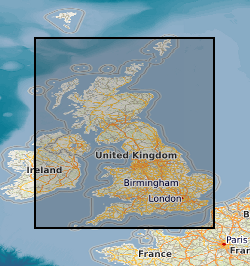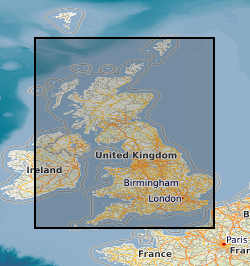1994
Type of resources
Topics
Keywords
Contact for the resource
Provided by
Years
Formats
Representation types
Update frequencies
Scale
-
This dataset collection contains data from the Stratospheric Photochemistry, Aerosols and Dynamics Expedition (SPADE) which was based at NASA Ames Research Center in California during portions of 1992 and 1993. The data consist of measurements collected onboard the NASA ER-2 aircraft, and selected radiosonde soundings from stations in the region of the experiment. Flights were conducted during October and November of 1992, April and May of 1993, and October of 1993. Theory team products come in two forms: as quantities evaluated along flight tracks and as global or hemispheric fields. Meteorological quantities, such as temperature, geopotential, and potential vorticity are available in both forms. They are based on analyses from both the U.S. National Meteorological Center and from the Assimilation Model of NASA's Goddard Space Flight Center. Other quantities, available along flight tracks only, include visible reflectivity, cloud height, UV reflectivity, and total ozone. The first two are derived from GOES imagery, the last two from the Meteor TOMS sensor. Finally, calculations of mixing ratios of selected chemical species using a photochemical steady state model are available along the flight track.
-

The database contains scanned photographs (at 1016dpi) of the UK and various locations around the world. Some are single band (black&white) others are 3 band colour. The images are stored in various formats on various types of magnetic media: .COT raw scans can only be used on the Intergraph ImageStation; .JPG (Intergraph format); .TIF. Processed scans may also be saved as stereomodels (with project data) and as orthophotographs. Mono coverage for most of the UK and we are constantly acquiring stereo data. Data is updated when unscanned areas are required by projects.
-

The UK Onshore Geophysical Library was established in 1994 in conjunction with the Department of Trade and Industry (DTI) and the UK Onshore Operators Group (UKOOG). The Library manages the archive and official release of seismic data recorded over landward areas of the UK. By agreement with the DTI and HMSO, the Library operates as a registered charity, funded by revenues raised from data sales and donations, with the long term objective of bringing all available UK onshore digital seismic data into secure archival storage, whilst providing efficient access to all interested parties. BGS has access to the data at cost of copying only for science budget work. Data index on the BGS Geoscience Data Index.
-

The map show the broad distribution of the industrial, including construction, mineral resources of Britain and the main sites where these are worked. Over extensive areas bedrock is covered by superficial deposits, including economically important sand and gravel resources. These superficial deposits are not shown on the map. Resources have been defined by dominant lithology (rock type). The map is a synthesis of the mineral resources and mineral working data held by the BGS in 1996. The published (paper) map has not been superseded however the digital mineral resources and mineral workings data has since been superseded. The map is logically consistent throughout.
 NERC Data Catalogue Service
NERC Data Catalogue Service